The foods and flavours of Peru are vast, vibrant and varied and we ate some amazing dishes on our trip. An abundance of fresh produce and a fusion of cultural influences means Peru has become the gastronomic epi-centre of South America.
Lima, Peru’s capital, is a culinary hotspot and home to eateries on the world’s top 50 restaurant list. Traditional Peruvian food and drink is available from markets, street stalls and tiny family run restaurants called huariques. If you’re heading that way, here’s the low down on some Peruvian food and drink you really need to try.
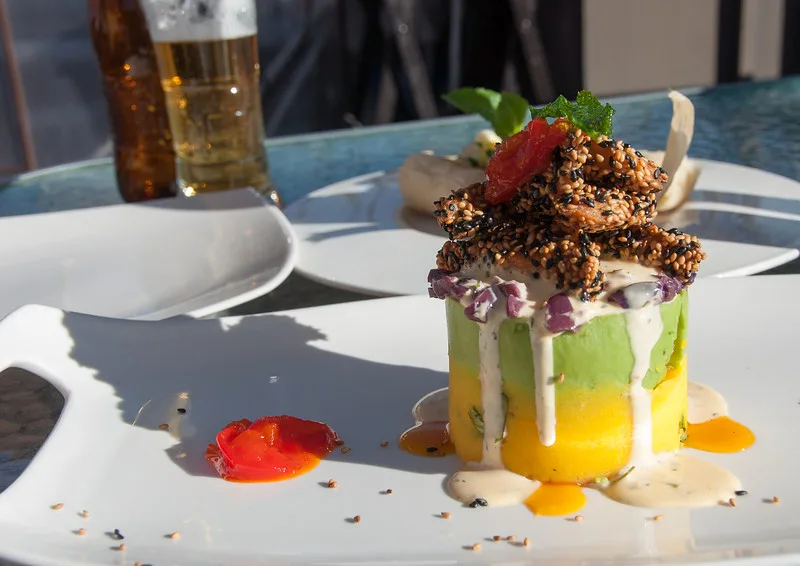
Peruvian Food and Drink
Contents
The dishes found in Peru reflect the cultures that have influenced the country’s cuisine. The Incas, immigrants from Spain, Italy Germany and further afield from China, Japan and West Africa have all made their mark on the ever-increasing Peruvian menu.
Ceviche
I’ll start with Ceviche because it’s pretty much Peru’s signature dish and I love it. I first tried this Peruvian classic at a cooking class in Uni Restaurant, London and have since been besotted ever since. The fish, usually sea bass, is ‘cooked’ by curing it in lime juice. Coriander, chilli and ginger are added before being served with onions and sometimes tomato or peppers.
White corn kernels and sweet potato came with the ceviche I had in Lima and were the perfect accompaniment. The word ceviche comes from the word ‘siwichi’ which means fresh fish in the original Peruvian quechua language. Delicious, zesty and very fresh, one of my favourite Peruvian foods.
Alpaca
Alpaca Spring Rolls served with guacamole. Peru grows avocados like they’re going out of fashion and Alpacas are just as ubiquitous. You’ll even see them walking down the road in Cusco. Alpacas, the camelid cousin of the llama, have been farmed in the Andean Highlands for centuries.
The meat is lean, rich and quite dark and in this case a bit chewy. This wasn’t one of my favourite Peruvian dishes but I’ve heard Alpaca steaks are very tender and lean. Alpaca is also used to produce incredibly soft wool – I’ve got to admit I preferred wearing it to eating it. Did you know that they eat alpacas in Peru? Read more interesting facts about Peru.
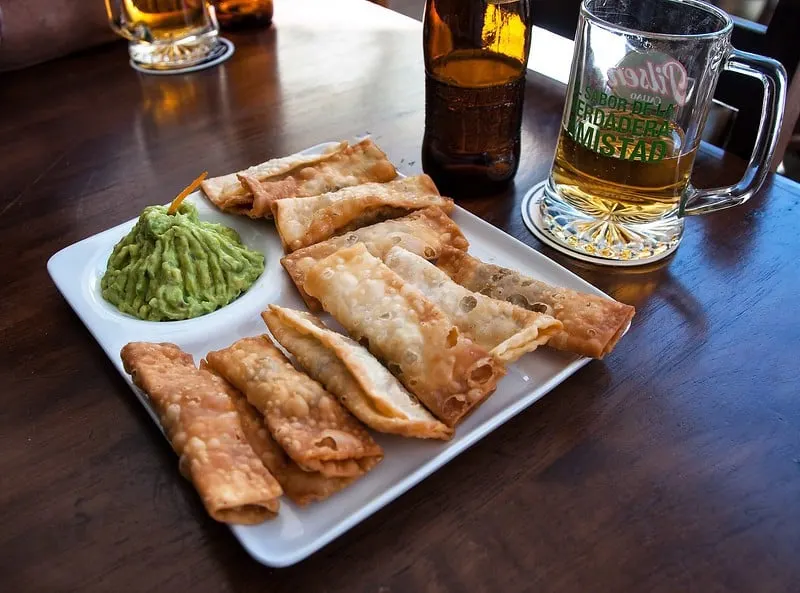
Tamales Cusqueños
An iconic Peruvian street food is Tamales – steamed dumplings made from cornmeal dough. Mr Jones had the ones below as a lunch-time snack on the Marcelo Batata roof terrace in Cusco. If you’re ever in Cusco do eat there because it serves fabulous Peruvian food with amazing rooftop views of the cathedral. Since we left I’ve discovered that they also hold cooking classes.
Tamales can be made with a range of different fillings and wrapped in all sorts of leaves. Ours were stuffed with aji amarillo (more on this below) and served with fresh tomatoes, corn kernels and coriander. The dumplings were wrapped in corn husks for steaming. Thank you, Mr Jones, for patiently letting me photograph everything you eat before you get a chance to tuck in…
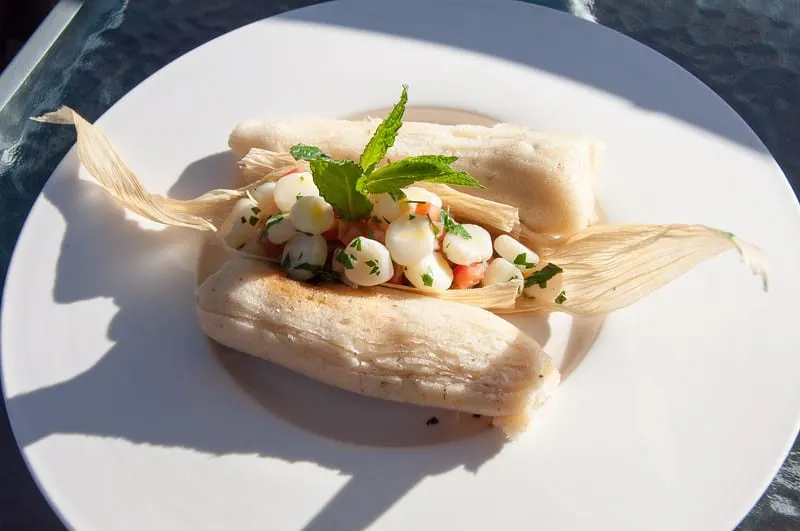
The brightly coloured tamales wrapped in banana skins below were for sale at the food market in Lima. I love how they’re chilli colour coded for hotness!
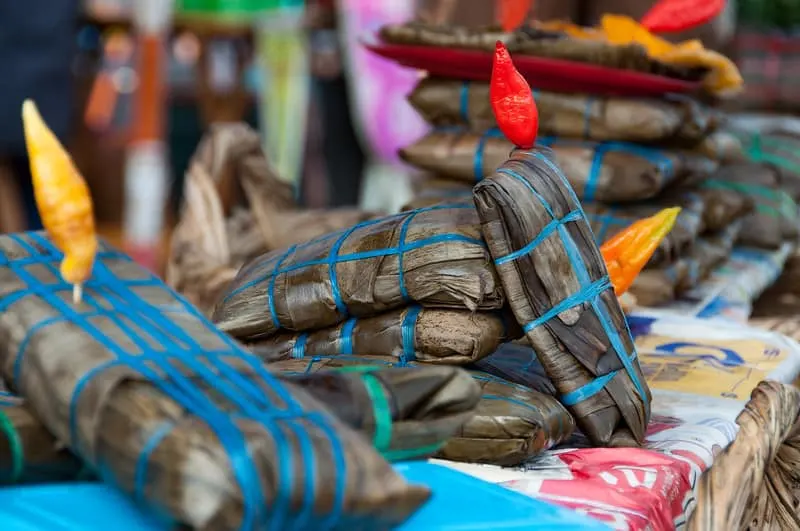
Aji de Gallina
Aji means chilli in Peruvian Spanish, amarillo means yellow and gallina means hen. Or, put more simply, chicken in yellow chilli sauce. The sauce is made with cream, ground nuts, cheese, aji amarillo and thickened with bread. It’s a mild sauce with not too much of a chilli kick; I’d have preferred it to be spicier. Shredded chicken is added to the sauce before being dished up with rice and black olives.
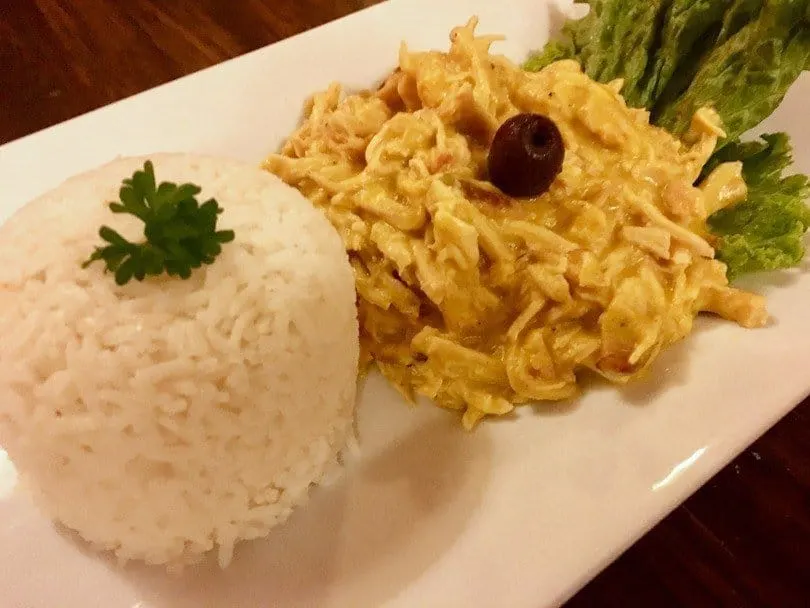
Causa or Causita
I couldn’t have chosen better for my first meal in Peru. We’d arrived in Cusco and randomly picked a rooftop bar for a drink and a snack. Restaurant Marcelo Batata turned out to be a highlight. Golden potatoes mashed with lime, oil and spicy aji amarillo sauce made up the base.
Next avocado is topped with crispy black sesame covered chicken and dressed with hot chilli chimichurri and black olives. Finally, a mayonnaise dressing is drizzled on with a garnish of syrup of rocoto and passion fruit. Pretty much a work of art I think and it tasted pretty good too. Avocado on toast will never be the same again…
Causa is a classic Peruvidan dish which means ‘the cause’. Last century, in the war between Peru and Chile, the only food left was potato. The wives of the Peruvian soldiers made a cold mash potato salad ‘for the cause’ and the dish was born.

Cusquena Beer
I always like to try the local beer when I travel and Cusquena, a premium lager, was a bit of a hit. Brewed in the foothills of Macchu Picchu, Peru, since 1911 the label states that it’s crisp, pure and totally refreshing. The label was right about that!
[button link=”http://eepurl.com/b8fcrv” color=”black” newwindow=”yes”] Sign up for new post updates or the monthly newsletter…[/button]
Lomo Saltado
Lomo Saltado or “jumping beef” is a popular Criollo Chifa dish. Criollo means mixed influence and Chifa is the fusion of Chinese food with classic Peruvian ingredients. Chinese immigrants arrived in Peru in the 1850s bringing with them new flavours and cooking techniques.
Juicy pieces of mouthwatering soy-marinated beef or alpaca are stir-fried in a wok with tomatoes, peppers, aji chillies, ginger and other spices. It’s often served with two starches; french fries and rice for a total carb overload. It’s basically your steak and chips with an oriental twist and very tasty. This dish was served up at Cala in Lima and enjoyed on the restaurant’s balcony overlooking the Pacific.
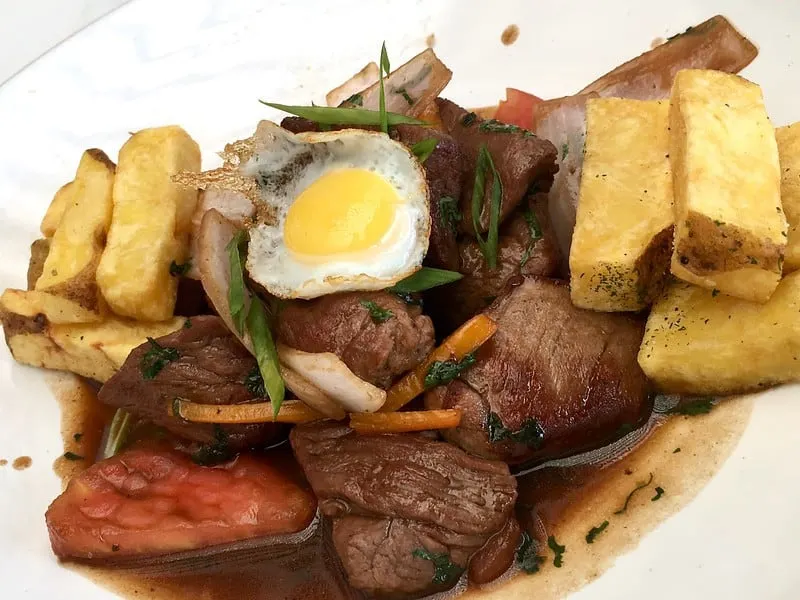
Peruvian Chocolate
After you’ve overdosed on the rich fruity flavours of Peruvian chocolate head to the Choco Museo to make your own. Learn about roasting and grinding the beans before making your own bar of Peruvian chocolate that you can take home with you.
There’s a Choco Museo in Cusco and another in The Barranco in Lima. The founders of Choco Museo have partnered with local Peruvian farmers to form a small cooperative producing high-quality beans that make their way up to Cusco from the jungle just beyond Machu Picchu.
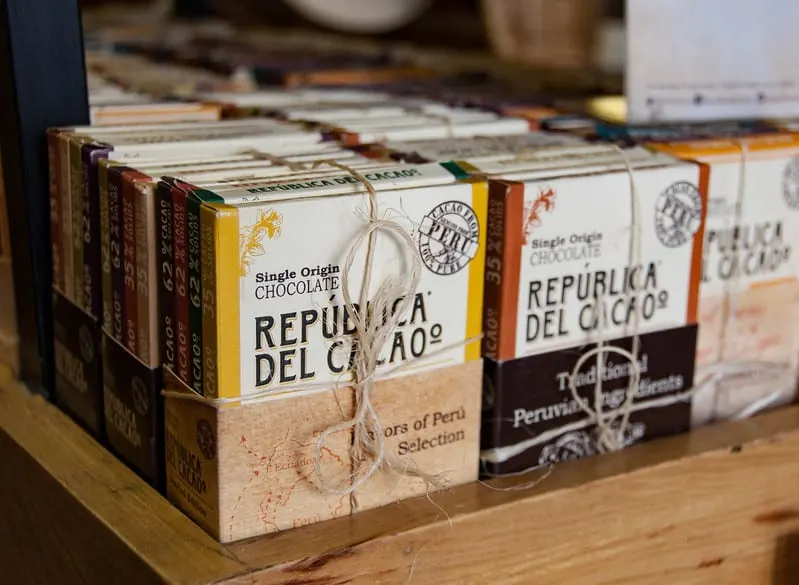
Coca Tea
When we arrived in Cusco I immediately felt the change in altitude. Pulling my suitcase up the ramp at the airport left me feeling breathless and incredibly unfit. The Peruvians have a dodgy brew which is supposed to help you adjust to the altitude.
Coca Tea was our welcome drink when we checked into the Belmond Palacio Nazarenas in Cusco. But here’s the thing; Coca is illegal in all countries except in Peru, Bolivia and parts of Argentina. And there’s a good reason for that. Coca contains the raw material for cocaine! It’s actually present in miniscule amounts in Coca tea but the brew is just a mild stimulant – a bit like caffeine.
I had a couple of cups whilst in Cusco and it tastes okay, a bit like green tea, and I can’t say I noticed that it made any difference to the altitude affects. A word of warning, don’t buy any to take home it’s illegal in most countries.
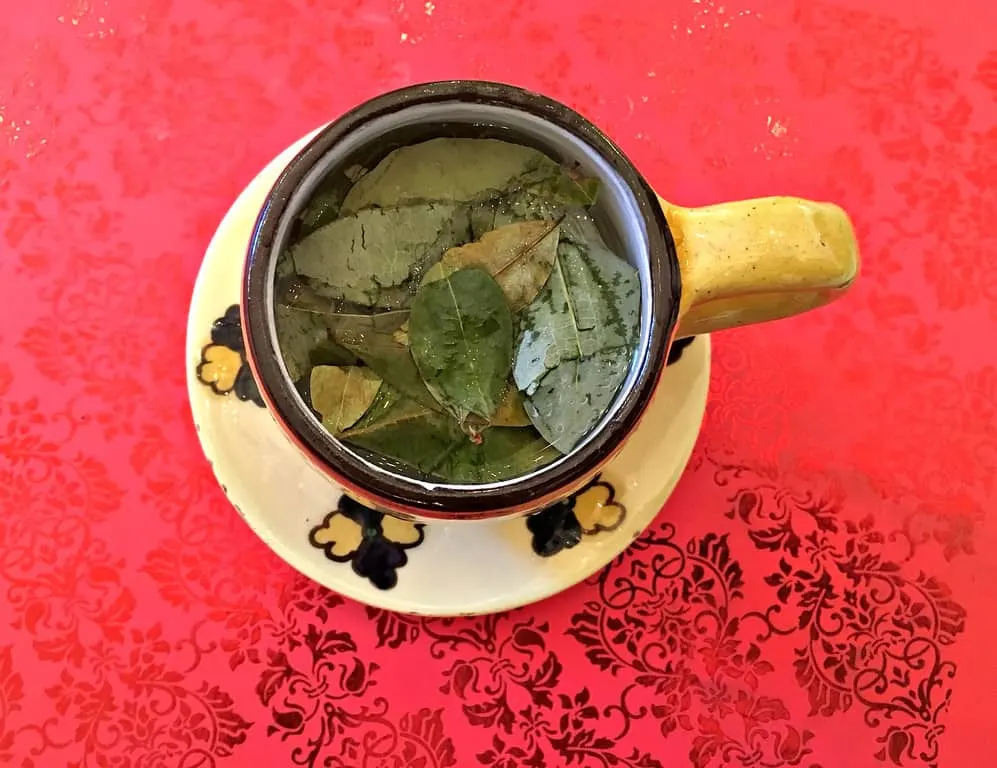
Lúcuma Smoothie
Lúcuma is a fruit native to Peru and looks like a round avocado with a pale orange coloured flesh. It’s also supposed to be a super food. It’s sweet and creamy with a hint of caramel and really popular in Peru. I can see why, it’s delicious. We tried this fruity smoothie during our Lima food tour David from Da Taste of Peru. David no longer runs these tours but he does recommend this fabulous Lima Food Tour.
Read my review of Da Taste of Peru tour.
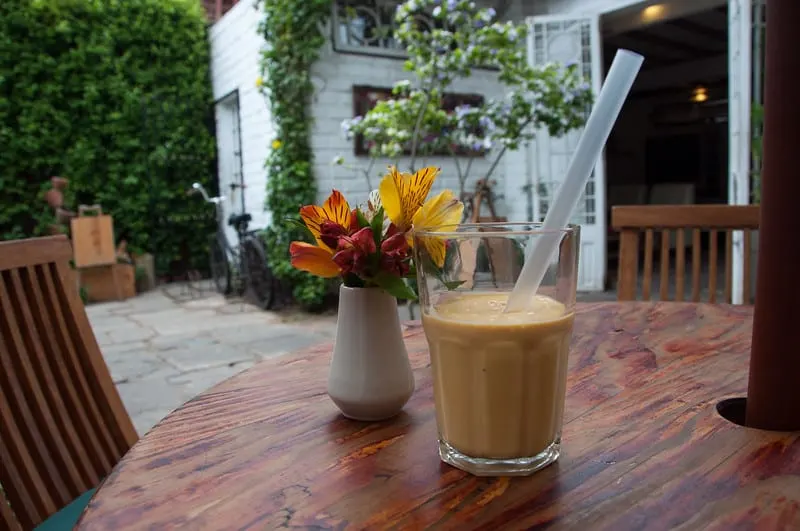
Pisco Sour
Finally, how could I write about Peruvian cuisine and not mention the country’s national drink Pisco. The Pisco Sour is made with Peru’s national spirit, a grape brandy called Pisco. Citrus juice, sugar syrup, bitters and egg white are shaken to give a zingy blend of sweetness and acidity all under a soft foamy topping. Here’s the recipe if you want to try making your own.
Pisco Sour Recipe
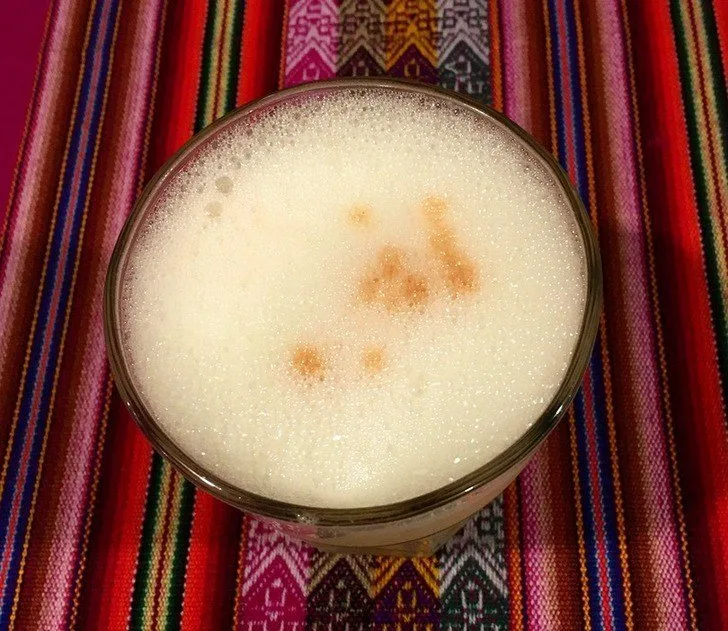
Guinea Pig
And just in case you were wondering, no I didn’t eat Guinea Pig or Cuy (pronounced ‘kwee’). I prefer to see the fluffy little things bright-eyed and munching on grass! How about you – would you eat Cuy?
Pin It!
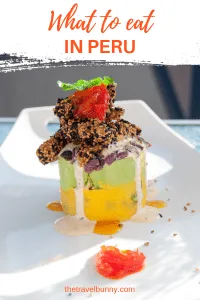
This post contains compensated/affiliate links which means you if you book through these links we earn a small commission at no extra cost to you. If you click through it’s much appreciated.

Suzanne Jones is a full-time travel blogger and writer at The Travelbunny which she started in 2011 during her time as a professional travel planner. Suzanne enjoys exploring new destinations, culinary encounters and the outdoors. When not travelling or writing about her adventures you’ll most likely find her, camera in hand, enjoying coastal walks in Sussex.
Suzanne also runs Hello Sussex a website which showcases the best of East & West Sussex. Read more about Suzanne.

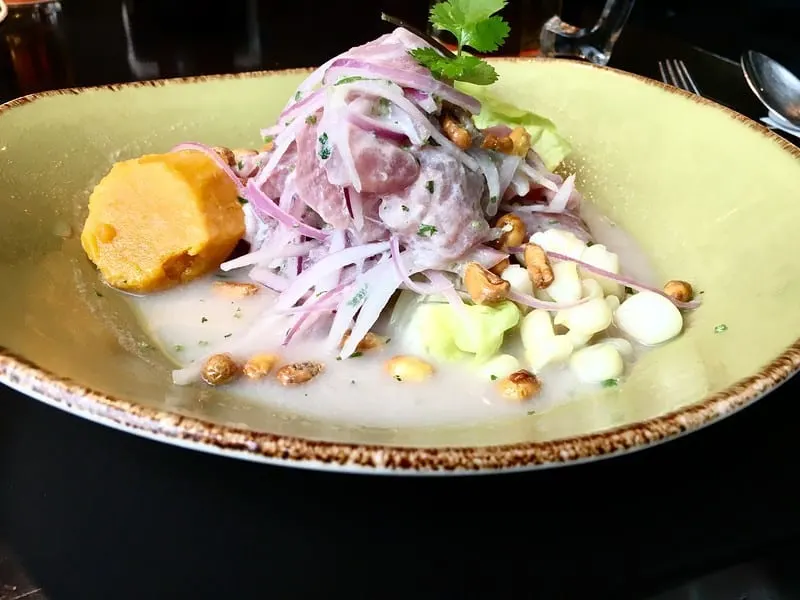
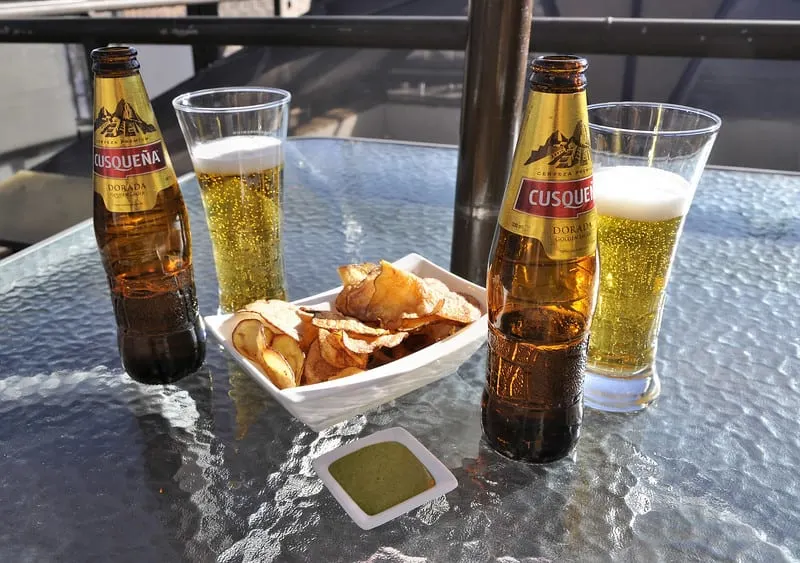
César
Wednesday 8th of June 2022
Correction. Lomo Saltado means Sautee Ribeye. It's not a Chinese Peruvian dish. It's an authentic Peruvian served before the Chinese Chifas open in Lima Peru. Chinese food doesn't include potatoes in their dishes. Potatoes are from Peru. The combination of Sautee fried tomatoes and onions is a Peruvian way to season a variety of local dishes containing meat, fish, chicken including hot dogs. And the rice is a Latin American staple served an a variety of dishes .
Suzanne Jones
Thursday 9th of June 2022
Wikipedia say this however I'm sure there are many interpretations and yours sounds good too. Are you Peruvian?
viveka
Tuesday 28th of March 2017
Wow .... that mash dish with the avocado and chicken on top .. that is really my kind of food ... fantastic images as always. Never been to Peru, have been thinking of visiting my friend over there .. but Nancy visit Europe and Sweden a couple of times per year. "The jumping beef" screams out to me too. Thanks or sharing you food adventure. My favourite image has to be the drink on the table with little flowers. No I would't eat Cuy. Had two many years ago, mum & daughter.
Suzanne Jones
Wednesday 29th of March 2017
You need to visit Nancy in Peru and soon Wivi. I think you'd love Peru, Cusco especially and Lima. There are some amazing restaurants in Lima. So glad you like the photos too... remember the pink lemonade.... *smiles
Travel Candy
Sunday 19th of March 2017
Oh wow - I am in love with Peruvian food after reading this! Seriously, every dish and drink made me drool. I'd really like to try Ceviche. And I had no idea you could eat Alpaca. A fabulous post and I really hope I get to Peru at some point to try this food!!
Suzanne Jones
Tuesday 21st of March 2017
I hope you get to Peru soon too! Until you do there are a lots of fab restaurants in the UK that serve Ceviche - Uni restaurant in London is one of them!
Lucy
Saturday 18th of March 2017
So interesting to learn more about Peruvian food – not sure I fancy the alpaca too much but the rest looks great (especially the chocolate!).
Brent
Monday 29th of August 2022
@Lucy,
I had an alpaca steak and it was tender and delicious. I raise alpaca in the States so I just had to try. Wish I coild find Pisco here. I loved the Pisco Sours. Guinea pig was greasy but ok. Lomo Saltado was amzing and the Ceviche was the best. Easy to make yourself as well. Peru all around was amazing.
Suzanne Jones
Saturday 18th of March 2017
The food was very good - I think we chose the wrong alpaca dish as I've heard good things about it from other sources. The chocolate was very intense and you didn't need to much to get a cocoa hit!
alison abbott
Saturday 18th of March 2017
Although everything looks delicious in your photos, I'm wondering you thoughts on how a pescatarian would fare there. Food is important to me when I travel. Would there be some dishes I would get excited about?
Suzanne Jones
Saturday 18th of March 2017
I think you'd fare very well Alison. Obviously there's ceviche as mentioned here in my post and the Causa has a tuna option as well as chicken. In Lima on the coast there's a plentitude of fish and shellfish - we had a fabulous seafood platter at Cala and I had sea bass for my main - there are so many excellent restaurants in Lima that serve fish and of course there are vegetarian options too. Even in the jungle we ate local fish - on our first night we enjoyed catfish from the river running past the lodge.